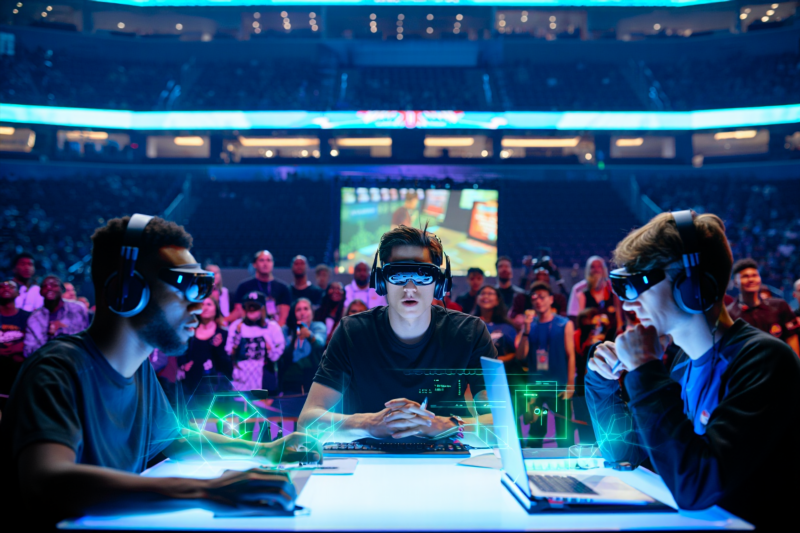
VR and AR Transforming Esports for Immersive Experiences
Welcome to the frontier of esports innovation, where virtual reality (VR) and augmented reality (AR) are revolutionizing how gamers compete, connect, and experience their favorite titles. As the esports industry continues its rapid growth—driven by global tournaments, professional player insights, and passionate communities—VR and AR stand out as transformative technologies shaping a more immersive, interactive future. This article uncovers how VR and AR are elevating esports to new heights, offering gamers unparalleled realism, engagement, and social interaction.
How VR and AR Enhance Esports: Immersion and Interaction
Immersive Gaming Environments
Virtual reality creates fully immersive worlds where players can step directly into the game environment. Instead of viewing gameplay from a screen, gamers wear VR headsets, experiencing a 360-degree universe that responds to their movements. This level of immersion:
- Increases Player Engagement: Players feel more connected to the game reality.
- Improves Skill Development: Physical movements and spatial awareness translate to better gameplay.
Example: In VR first-person shooters, players can physically duck, aim, and move as if in a real combat zone, sharpening reflexes and situational awareness.
Augmented Reality Integrating Digital with Reality
AR overlays digital elements on the physical world, blending real and virtual experiences seamlessly. Through AR glasses or smartphones, esports fans and players can access:
- Live Stats and Data: Real-time player stats during matches.
- Interactive Overlays: 3D visualizations of game strategies or tournament brackets in physical spaces.
This integration enhances spectator engagement and provides players with strategic tools during gameplay.
Key Benefits of VR and AR in Esports
| Benefit | Description | Impact on Esports |
| Enhanced Immersion | True-to-life, 360-degree environments | Deeper player engagement and realism |
| Improved Training | Physical interaction with training modules | Sharper skills and faster learning curves |
| Spectator Experience | Interactive viewing with AR overlays | More engaging and informative broadcasts |
| Social Connectivity | Real-time multiplayer in virtual spaces | Strengthened community bonds |
The Future of Esports with VR and AR
Expanding Competitive Opportunities
VR and AR are lowering barriers to entry, allowing more casual gamers to experience competitive esports in a virtual or augmented environment. As technology becomes more affordable, expect to see:
- Virtual Tournaments: Hosted within immersive worlds, accessible globally.
- New Game Genres: Expanding beyond traditional formats to VR-specific genres like virtual racing or adventure sports.
Tech-Driven Spectator Experiences
Spectators will transition from passive viewers to active participants through AR-enhanced live streams, where they can:
- Access real-time data overlays.
- Participate in virtual meet-and-greets within esports arenas.
- Use AR apps to interact with live gameplay, making viewing more dynamic and engaging.
Challenges and Opportunities
While VR and AR promise remarkable advancements, challenges remain:
- Hardware Costs: Making the technology accessible to mainstream audiences.
- Technical Limitations: Improving latency, graphics fidelity, and comfort.
- Content Development: Creating engaging VR/AR esports titles.
Overcoming these hurdles will unlock limitless possibilities for immersive gaming.
Why Esports Stakeholders Should Embrace VR and AR Now
For Developers and Publishers
- Innovate gameplay and storytelling.
- Differentiate titles in a competitive market.
- Build long-term fan engagement with immersive content.
For Players and Fans
- Experience more realistic and engaging gameplay.
- Participate in virtual tournaments from anywhere.
- Connect more deeply with the community.
For Investors and Brands
- Unlock new sponsorship and advertising avenues.
- Reach audiences through innovative, immersive campaigns.
- Position as industry leaders in technological evolution.
VR and AR are transforming the esports landscape by amplifying immersion, interaction, and connectivity. From training highly skilled players to crafting captivating spectator experiences, these technologies are unlocking new dimensions of entertainment. As the industry evolves, embracing VR and AR today will ensure you stay ahead in the digital arena—where the future of esports is immersive, interactive, and limitless.
Explore the possibilities now—step into the future of esports.**


